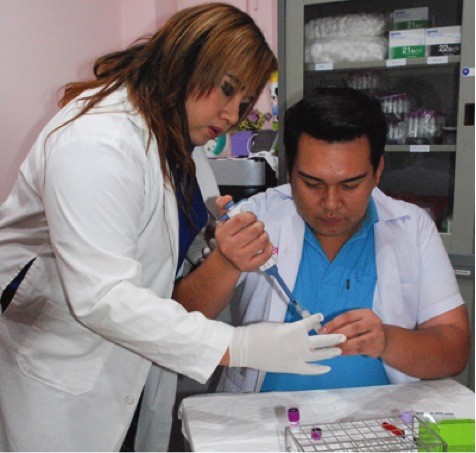Asia Regional
- History
- Our Work
- Lower Mekong Initiative (LMI)
- Newsroom
- Reports and Publications
- Transforming Lives
- Careers
- Partnership Opportunities
- Business Opportunities

Background
Advances in science have made it possible to end the AIDS epidemic by increasing access to HIV testing and antiretroviral medications among individuals facing the greatest risk of infection. The global vision to end AIDS involves diagnosing 90 percent of all infected individuals, placing 90 percent of those diagnosed on antiretroviral medications, and suppressing the HIV virus to undetectable levels among 90 percent of individuals on treatment by 2020. To achieve this vision, better approaches are needed to reach and retain in clinical services individuals with the greatest infection risks. In many countries across Asia and the Pacific, the greatest proportion of new HIV infections each year occur among key populations such men who have sex with men (MSM) and transgender women, yet the number of people in these populations accessing HIV services remains very low.
Program Interventions
With funding from the U.S. President’s Emergency Plan for AIDS Relief (PEPFAR), USAID’s regional HIV program works to accelerate epidemic control by developing and demonstrating improved solutions to engage key populations and support their sustained access to friendly HIV testing and treatment services. Through partnerships with community-based organizations and public-sector service providers, USAID/RDMA invests in innovative service models involving applications of rapid HIV diagnostic technologies, social media, and mobile communication platforms to increase demand for and use of lifesaving HIV services. USAID/RDMA also plans and coordinates closely with the U.S. Centers for Disease Control and Prevention to help countries identify, evaluate, adopt, implement and lead more effective and cost-efficient solutions to address HIV and AIDS.
Results
- USAID supported the launch of the Tangerine Clinic in Thailand late last year -- the first transgender health center in Asia. In addition to providing services, the pilot clinic supports research to guide public sector investments in health services for transgender people, and to strengthen advocacy efforts by transgender networks and service organizations.
-
USAID-supported partners in Chiang Mai are demonstrating an enhanced outreach and referral model that is initially achieving remarkable successes in linking more than 90 percent of individuals reached to HIV testing services. The model is also remarkable for its use of low-cost social network recruitment strategies and confidential electronic client referral systems using inexpensive mobile technologies.
-
With USAID support in Thailand, community partners are leading research demonstrating their capacity to provide high-quality clinical services in key-populations friendly community sites. To date, these partners have enrolled more than 1,500 individuals in an HIV "test and start" study, in which 17 percent of participants have been diagnosed with HIV and more than 80 percent of those diagnosed are already receiving HIV treatment.
-
In Laos, USAID supported the integration of oral-fluid HIV screening into peer-led outreach for MSM and TG, resulting in an increase in uptake of HIV testing from less than 20 percent of individuals reached to more than 66 percent of individuals reached.
-
In the past year, USAID-supported partners in Thailand provided individual or small group HIV prevention interventions to more than 23,000 men who have sex with men (MSM), transgender (TG) women, and other key populations facing elevated HIV infection risks. This figure is 1.6 times higher than the annual target and almost 1.4 times higher than results achieved in the previous year.







Comment
Make a general inquiry or suggest an improvement.